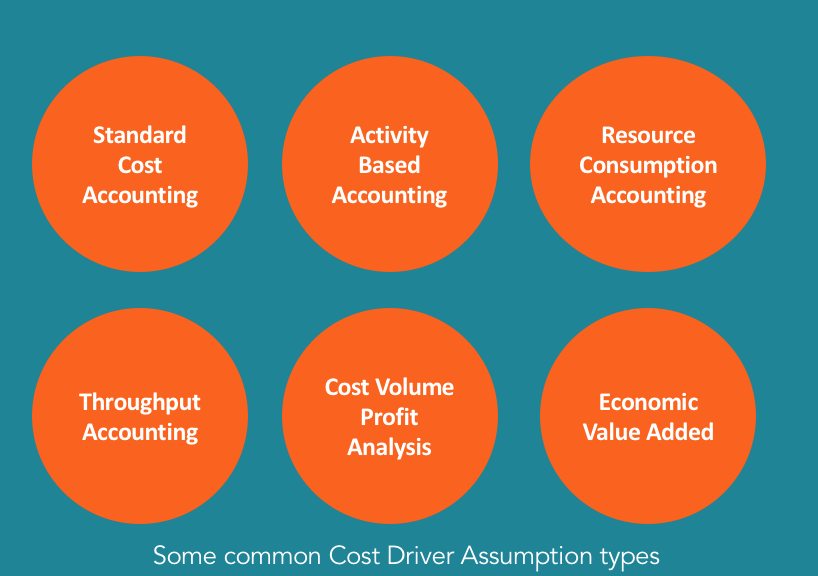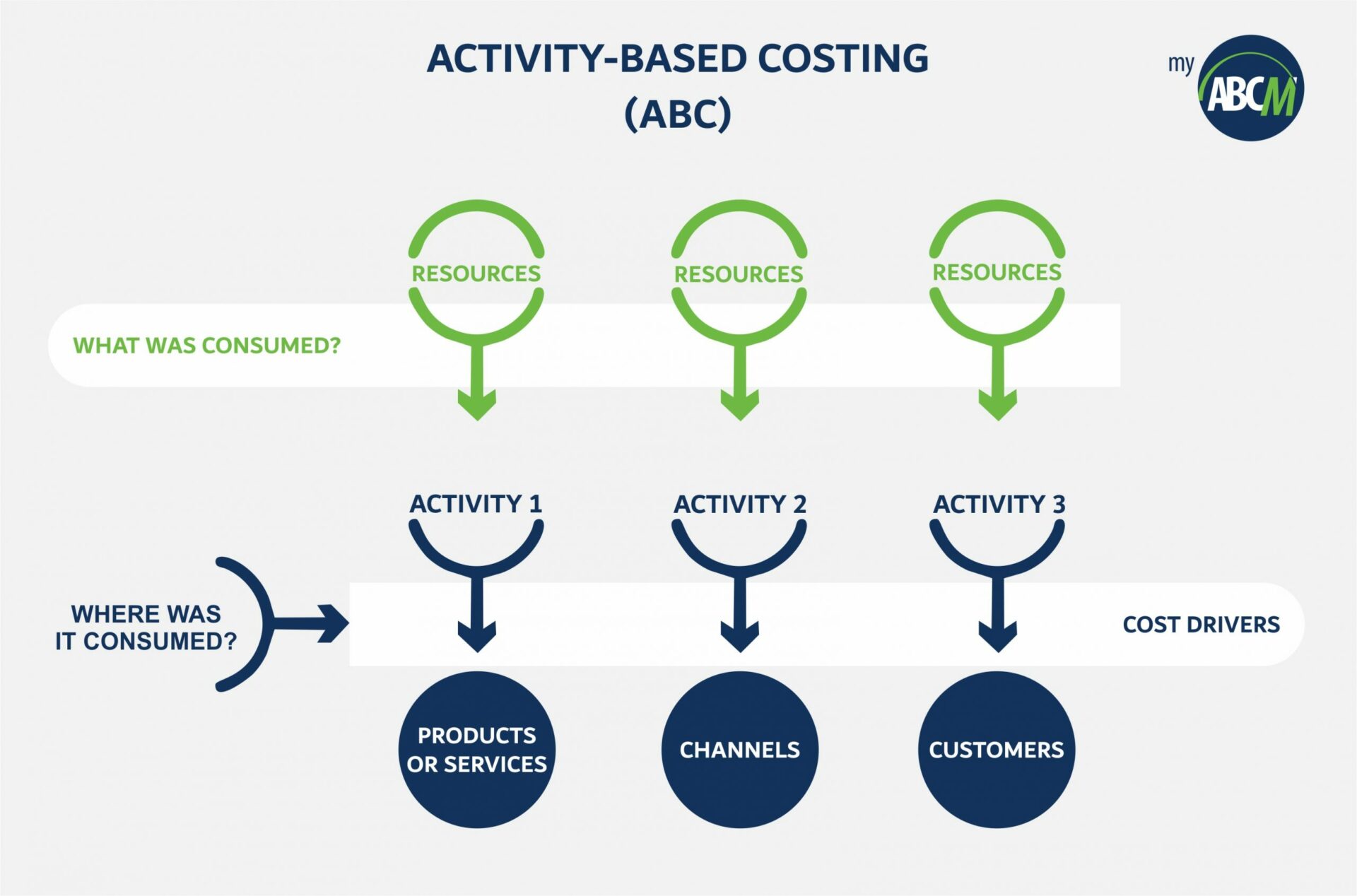Author S Udpa 1 Affiliation 1 School of Economics and Business Administration Saint Marys College of California Moraga USA. Activity-based costing provides a more accurate method of productservice costing leading to.

Cost Driver Know The Significance Of Cost Drivers In Cost Accounting
Separate multiple e-mails with a.

. Activity-based costing serves and complements many other analyses and measures including target costing product costing product. It drives a number of capabilities. Activity based costing attempts to measure the costs of products and services more accurately than traditional cost accounting Photo.
Activity-based costing ABC is an accounting tool that allocates costs incurred through a companys practice of providing goods and services to the consumer. ABC can provide insight into inefficiencies across the supply chain and unlock excess capacity. This is the focus of activity-based management.
Activity cost cost of floor area cost of materials staff costs cost of capital equipment cost of hospital infrastructure other indirect costs. These include indirect costs such as overhead expenses and also direct costs. Final step in ABC application was the calculation of the cost price of every bed occupied in each day and the cost of other selected medical services.
The following cost categories were included. A key principle of this system is that every dollar of revenue and cost in the general ledger can be allocated to patientsno easy feat but one that makes UPMCs approach unique. Activity-based costing was first defined in the late 1980s by Robert S.
More developed cost systems such as Activity Based Costing ABC may ease this strive for cost efficiency. Activity-based costing aims to allow fixed costs. Patients can be aggregated in multiple ways to provide costs by diagnosis procedure service line and sub-service line.
This in turn can drive services provided toward generating more value for the hospital. Adoption of ABC promises to transform healthcare providers managerial cost accounting systems in a way that will enable these organizations to keep pace with the changes that are sweeping the industry. Traditional charge systems relative value unit RVU costing ratio-of-cost-to charges RCC Diagnosis-Related Group DRG Activity-Based Costing ABC or Time-Driven Activity-Based Costing TDABC among others.
The Health Catalyst CORUS Suite Figure 1 is the first activity-based cost accounting system widely available today to track 100 percent of clinical costs using time-driven and other activity drivers to understand resource consumption accurately. Ford Motor Company Assembly Line Dearborn Michigan 1927 ABC contrasts with traditional costing cost accounting which sometimes assigns costs using somewhat arbitrary allocation percentages for overhead or the so-called indirect costs. Kaplan and William S.
As such the findings of this systematic review suggest that the time-driven activity-based costing methodology could become the gold standard to achieve better cost accuracy understand healthcare resource allocation reduce waste and improve transparency in real-world settings. The intervention costs were evaluated bottom-up by an Activity-Based Costing ABC analysis in 5 hospitals 2 performing LRP and 3 performing RARP 15. By combining activity-based costing with standard costing health care administrators can better plan and control the costs of health services provided while ensuring that.
Activity-based costing for hospitals. Activity-based costing analyses were performed at two different types of retinal practices in the US ie a small single-specialty group practice and an academic hospital-based practice Bascom. Activity-based costing for hospitals Health Care Manage Rev.
Udpa 1996. Generally activity-based costing is used in the manufacturing industry as it produces more accurate cost data generating values that are close to the true cost and can be identified during the production phase. However one costing approach activity-based costing ABC has been widely touted as an effective means for achieving these goals.
Health Care Management Review21 383 July 1996. The CORUS activity-based costing system. 6 789 Hospitals use several standard costing methodologies such.
Traditional costing methods reflect charges rather than fundamental costs to provide a service. 2345 Therefore understanding the cost at different activity levels of a hospital is crucial for economic control. 1 In health care this is often based on services associated with patient care which can be procedural or time-based.
These levels include batch-level activity unit-level activity customer-level activity organization-sustaining activity and product-level activity. Informing payer negotiations As organizations more fully embrace value -based care they are starting to negotiate bundled payment arrangements. In this article activity-based costing an approach that has proved to be an improvement over the conventional costing system in product costing is introduced.
3 2013 181 Carvalho Jericó and Castilho 4 report about ABC application in central sterilizing services and Ridderstolpe et al3 examined the application of the method in heart centre. Activity-based costing for hospitals. Despite the relatively high number of existing applications use of the ABC in hospital.
Time-driven activity-based costing TDABC using time and capacity cost rates to allocate resource costs has become the gold standard in measuring the true costs of health care delivery and well described in a growing literature. The old methods of assigning cost reduction. International Journal of Collaborative Research on Internal Medicine Public Health Vol.
Currently process mapping in health care is sporadic covering mostly procedures or discrete visits. A value-based chain of activities ensures efficient and high quality delivery of care. This article examines the application of activity-based costing to hospitals using current health care practices and procedures such as diagnosis-related groups patient-activity systems case management and critical path analysis.
ABC provides more elaborate cost information on the activities of the infirmary which could typically ensue in better cost decrease and cost direction. Value in health care is defined as outcomes achieved per dollar spent and understanding cost is critical to delivering high-value care. Activity-based costing puts its focus on cost drivers activities that cause costs to increase and specifically transaction-based drivers such as number of orders received.
Activity-based costing ABC is an accounting tool that allocates costs incurred through a companys practice of providing goods and services to the consumer. A basic arrangement will offer a single payment for a defined procedure such as for total knee replacement and cover the hospital and physician costs. To quantify the services provided by healthcare different cost systems for allocation of resources have been used.
Bruns as a modern alternative to absorption costing. The more rigorous method of time-driven activity-based costing was used to compare cost between whole-breast. 8832280 No abstract available.

Calculate Activity Based Product Costs Principles Of Accounting Volume 2 Managerial Accounting

Activity Based Costing Everything You Need To Know About The Abc Methodology Myabcm

Compare And Contrast Traditional And Activity Based Costing Systems Principles Of Accounting Volume 2 Managerial Accounting

Activity Based Costing Abc Versus Traditional Cost Accounting Tca Download Scientific Diagram
0 Comments